Select Language
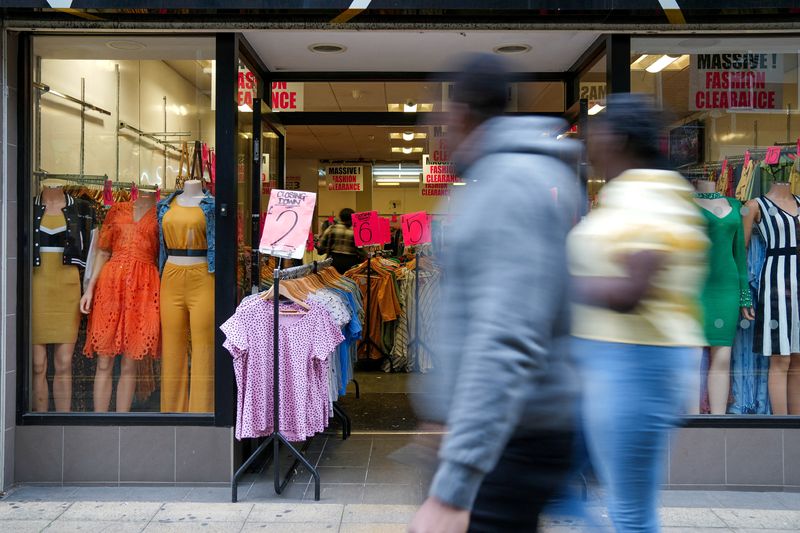
By Andy Bruce
(Reuters) - British consumer spending contracted in June, hurt by bad weather, according to surveys on Tuesday that added to recent signs of the country's tepid economic growth that the new Labour government has promised to boost.
Barclays said spending on its credit and debit cards fell by 0.6% in annual terms in June - the first drop since February 2021. It linked the fall to cool weather at the start of month.
"Once again, our data demonstrates the undeniable impact that unseasonable weather can have on consumer spending," Karen Johnson, Head of Retail at Barclays, said.
"The sluggish demand at the start of June even caused some fashion brands to adjust their sales schedules, although I was pleased to see that the situation has since improved with the arrival of sunnier days."
Similarly, the British Retail Consortium cited chilly weather as it reported a 0.2% drop in sales values in June compared with a year earlier, after a 0.7% rise in May.
The readings chimed with other signs of slowing growth, including business surveys, after the economy rebounded in the first quarter from a recession in the second half of 2023.
Improving economic growth is the top priority of new Prime Minister Keir Starmer whose Labour Party swept to a landslide victory in parliamentary elections on July 4.
Barclays said spending at supermarkets fell for the first time in two years last month but there were reasons for optimism.
"While June’s data suggests a weak month, the view looking ahead to the second half of the year, as we see it, is one of falling interest rates, growing real incomes, and increasing confidence among consumers to spend and businesses to invest," said Barclays' chief UK economist Jack Meaning.
Accountants KPMG, sponsor of the BRC's retail sales survey, said the economic environment was improving but said many retailers were still struggling.
Retail sales volumes, excluding petrol, remain slightly below their pre-pandemic level, according to official data.
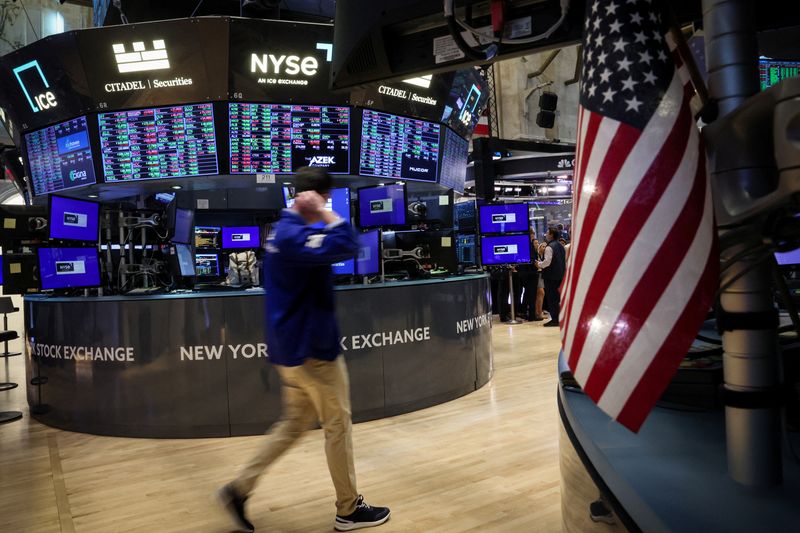
By Noel Randewich and Ankika Biswas
(Reuters) -The S&P 500 and Nasdaq notched record-high closes on Monday as investors awaited fresh inflation data, commentary from Federal Reserve Chair Jerome Powell and the start of quarterly earnings season.
Nvidia (NASDAQ:NVDA) rose nearly 2%, Intel (NASDAQ:INTC) rallied over 6% and Advanced Micro Devices (NASDAQ:AMD) added 4%, lifting the Philadelphia semiconductor index 1.9%.
Traders will scrutinize consumer price data due on Thursday and producer price data expected on Friday to gauge the Fed's progress in fighting inflation.
Investors worry that waiting too long to cut interest rates could damage the labor market and push the economy into a recession. They will closely monitor Powell's semiannual testimony before U.S. Senate and House committees on Tuesday and Wednesday.
"What investors want to hear is a dovish tone and an acknowledgement that the two-sided risks are more evenly balanced today, in particular, with respect to the labor market," said Ross Mayfield, an investment strategy analyst at Baird.
Expectations for interest rate cuts as early as September grew after Friday's nonfarm payrolls report showed U.S. job growth slowed in June - the latest data to point to weakness in labor market conditions.
Traders now see a greater than 75% chance of a rate cut of at least 25 basis points by September, up from last week's 60%, according to CME's FedWatch.
Citigroup, JPMorgan Chase (NYSE:JPM) and Wells Fargo are slated to kick off Wall Street's second-quarter earnings season on Friday. Citigroup shares gained 1.1%, while Wells Fargo lost 1%.
Analysts on average see S&P 500 companies increasing their aggregate earnings per share by 10.1% in the second quarter, up from an 8.2% increase in the first quarter, according to LSEG I/B/E/S.
The S&P 500 climbed 0.10% to end the session at 5,572.85 points.
The Nasdaq gained 0.28% to 18,403.74 points, while the Dow Jones Industrial Average declined 0.08% to 39,344.79 points.
It was the Nasdaq's fifth straight record-high close and the S&P 500's fourth straight.
Of the 11 S&P 500 sector indexes, six declined, led lower by communication services, down 1.01%, followed by a 0.59% loss in energy.
Paramount Global fell 5.3% after it agreed on Sunday to merge with Skydance Media, scripting a new chapter for one of Hollywood's oldest studios.
Boeing (NYSE:BA) gained 0.55% after the planemaker agreed to plead guilty to a criminal fraud conspiracy charge and pay a fine of $243.6 million to resolve a U.S. Justice Department investigation into two fatal 737 MAX crashes.
Advancing issues outnumbered falling ones within the S&P 500 by a 1.3-to-one ratio.
Volume on U.S. exchanges was relatively light, with 10.1 billion shares traded, compared with an average of 11.6 billion shares over the previous 20 sessions.
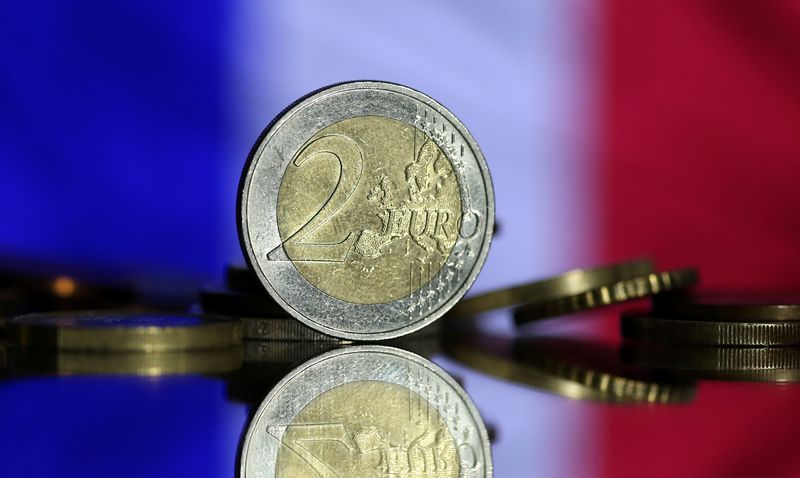
By Harry Robertson, Alun John and Dhara Ranasinghe
LONDON (Reuters) -French shares and bond prices turned higher in early trading on Monday after initial falls as investors digested elections which left France facing a hung parliament and the prospect of taxing negotiations to form a government.
A surprise left-wing surge in Sunday's election blocked Marine Le Pen's quest to bring the far right to power in the National Assembly but no single group secured a working majority.
That meant French assets traded choppily at the open as traders struggled to process relief at the absence of a far right victory, concern about a more powerful left, and uncertainty about who will eventually form a government.
France's blue-chip CAC40 share index was last up 0.4%, reversing an earlier fall, though still down around 4% since the election was called in early June.
Societe Generale (OTC:SCGLY) and BNP Paribas (OTC:BNPQY) which had opened down around 1%, were last a touch higher.
Bond markets too were uncertain how to price the outcome and the gap between Germany and France's 10 year bond yields widened to as much as 71.1 basis points but was last a touch narrower at 66.5 bps.
That spread reflects the premium investors demand to hold French debt rather than euro zone benchmark Bunds. It widened to above 80 basis points in the build-up to the election, its highest since the euro zone crisis in 2012, as investors feared a far-right majority that could implement high spending policies.
Opinion polls had forecast Marine Le Pen's far-right National Rally (RN) would be the largest party, but the election leaves France's 577-seat assembly divided in three big groups - the left, centrists, and the far right - with hugely different platforms and no tradition at all of working together.
"It's going to be very hard to actually go ahead and pass any policy and bring about any progressive reforms because each party's vote is split and no one has an absolute majority," said Aneeka Gupta, director of macroeconomic research at WisdomTree.
She added, however: "I think the markets will be happy we're avoiding this extreme situation with the far right."
Investors also have concerns that the left's plans could unwind many of President Emmanuel Macron's pro-market reforms and believe a gridlock could end attempts to rein in France's debt, which stood at 110.6% of gross domestic product in 2023.
The euro steadied after an initial fall against both the dollar and the pound and was at $1.0835 and 84.58 pence, respectively.
"It looks like the anti-far right parties really got a lot of support," said Simon Harvey, head of FX analysis at Monex Europe.
"But fundamentally from a market perspective, there's no difference in terms of the outcome. There's really going to be a vacuum when it comes to France's legislative ability."
NEXT PRIME MINISTER?
Markets' focus now turns to who will be France's next prime minister.
Current Prime Minister Gabriel Attal said he would tender his resignation, but it was not clear whether the president would accept it immediately, given the daunting task ahead to form a government.
Economists at Nomura said they expected a centrist technocratic premier to eventually be installed, and when this happens and "political uncertainty subsides, we would expect OAT-Bund spreads to tighten again."
They said a Prime Minister from left bloc - the New Popular Front - would be "the most adverse outcome for financial markets."
Parties from the NFP - made up of the French Communist Party, hard-left France Unbowed, the Greens and the Socialist Party - met overnight for first talks on how to proceed.
The bloc has no leader, and its parties are deeply divided over who they could select as a suitable premier, though investors remain nervous.
"The economic programme of the left is in many ways much more problematic than that of the right, and while the left will not be able to govern on their own, the outlook for French public finances deteriorates further with these results," said Nordea's chief market analyst, Jan von Gerich.

By Maria Martinez
(Reuters) -German exports fell more than expected in May, due to weak demand from China, the U.S and European countries, data from the federal statistics office showed on Monday.
Exports fell by 3.6% in May compared with the previous month, compared with the 1.9% decrease forecast by analysts in a Reuters poll.
The foreign trade balance showed a surplus of 24.9 billion euros ($26.94 billion) in May, following 22.2 billion euros in April and 16.8 billion euros in May of the previous year.
Exports to EU countries dropped by 2.5% in May on the month and exports to countries outside the EU declined by 4.9%, the statistics office reported.
($1 = 0.9243 euros)
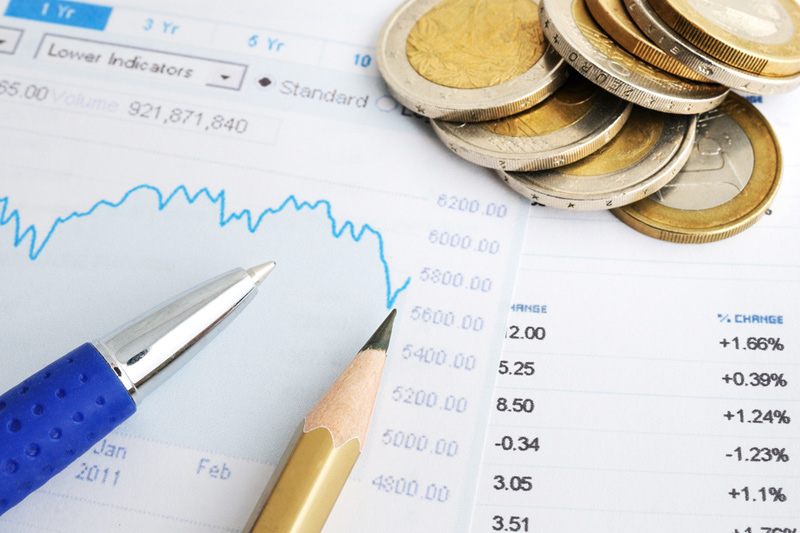
By Lewis Jackson and Lucy Craymer
BRISBANE (Reuters) -U.S. and Australian officials said on Monday they were committed to improving financial connectivity in the Pacific, as lenders and policymakers from across the region met to discuss bolstering banking services amid increasing interest from China.
Pacific Island countries are facing challenges as Western banks end long-term relationships with their counterparts in small nations in the region and others look to close operations, limiting access to U.S. dollar-denominated bank accounts.
Australian Assistant Treasurer Stephen Jones said Canberra wanted to be the partner of choice in the Pacific, whether in banking or defence.
"We would be concerned if there were nations operating within the region whose principle objective was advancing their own national interest as opposed to the interests of the pacific island nations," Jones said on the first day of the two-day Pacific Banking Forum in Brisbane, when asked about Chinese banks stepping into the vacuum.
He declined to say whether China fit that description. Australia and the U.S. are co-hosting the forum.
Washington has also boosted efforts to support Pacific Island countries to curb China's influence.
"We recognise the economic and strategic significance of the Pacific region, and we are committed to deepening our engagement and collaboration with our allies and partners to bolster financial connectivity, investment, and integration," said U.S. Treasury Undersecretary Brian Nelson, who is responsible the department’s terrorism and financial intelligence office.
Western banks are de-risking to meet financial regulations, which has made it harder to do business in Pacific Island nations, in turn undermining financial resilience in these countries, according to experts.
Neither the U.S. nor Australia have yet to make detailed announcements at the forum, much of which is closed to media, but their comments come as Western nations who have traditionally held sway in the Pacific grow increasingly concerned about China's regional influence.
Beijing has signed key defence, trade and financial deals in the region. Bank of China has opened offices across the region and signed an agreement with Nauru to explore opportunities there earlier this year after an Australian bank said it would pull out of the country.
Nelson told those attending the meeting that the U.S. recognised and is committed to addressing bank de-risking across the Pacific.
"There is a lot to be gained by promoting financial integration around the world," he added. "But conversely, when correspondent banking relationships dwindle, the consequences can be substantial."
Nelson said over the past decade correspondent banking relationships in the Pacific had declined at twice the rate of the global average. The World Bank and Asia Development Bank is working on programmes to improve corresponding banking relations.
U.S. Treasury Secretary Janet Yellen said in a virtual address to the meeting that Washington's focus was on supporting the Pacific's economic resilience, including through strengthening access to correspondent banks.
"The United States is committed to an Indo-Pacific that is free and open, connected, prosperous, secure, and resilient. A strong and connected Pacific region has benefits for the United States and for the global economy," she said.
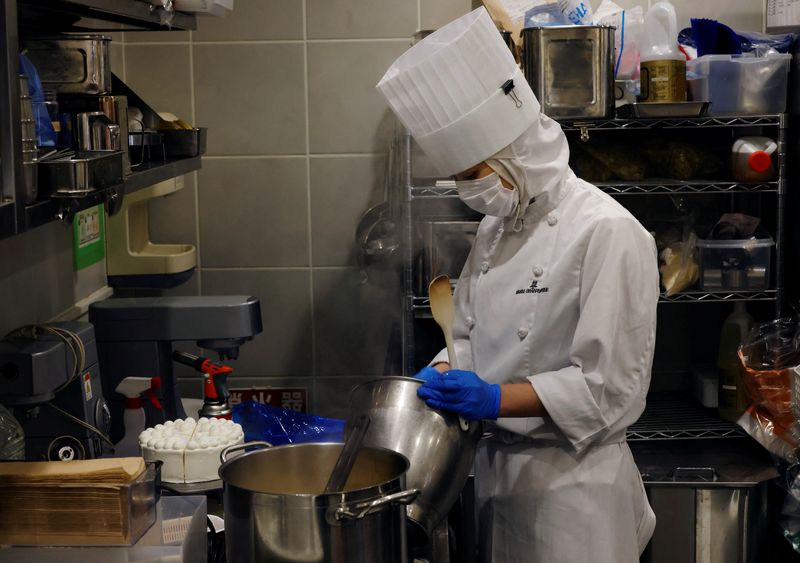
By Tetsushi Kajimoto
TOKYO (Reuters) - Japan's inflation-adjusted real wages fell in May for a record 26th straight month, highlighting the pain of inflation that is dampening household spending and complicating the central bank's efforts to normalise monetary policy.
Real wages fell 1.4% in May, government data showed on Monday, faster than April's 1.2% decline, as a weakening yen and higher commodity prices pushed up the cost of imports.
But there were some bright spots in the data.
Base pay, or regular pay, rose 2.5% year-on-year in May, the best pace since January 1993, around the time when Japan's asset bubble burst.
The rise reflects the hefty increases agreed by labour and management at annual labour negotiations.
This year, Japanese firms have offered a 5.1% increase in monthly pay, a level unseen in 33 years.
Nominal wages, the average total cash earnings per worker, grew 1.9% to 297,151 yen ($1,850), accelerating from the previous month's 1.6% and at the highest pace in 11 months.
In Japan, seven out of 10 workers are employed by small firms, which are struggling to pass on rising costs to their clients.
Wage hikes at firms with 30 or more employees outpaced inflation for the first time in 26 months, the labour ministry said, though when including very small firms with five or more workers, pay hikes still lagged inflation.
Overtime pay, a barometer of corporate strength, rebounded 2.3% in the year to May, the first increase in six months, the labour ministry data showed.
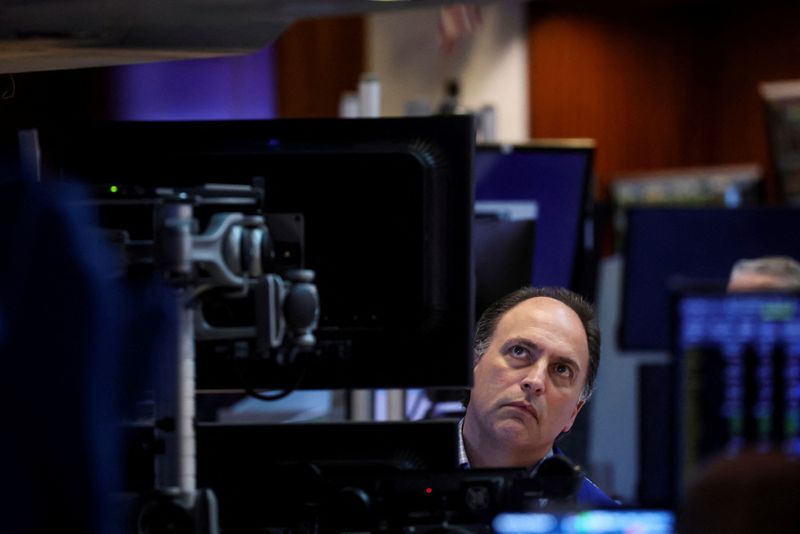
After a holiday-shortened week, investors will closely watch the upcoming inflation report, which is the key highlight of the upcoming week. Last week, the labor market showed fresh signs of moderation.
June's nonfarm payroll figures showed an increase of 206,000 jobs, a slight decrease from May's revised count of 218,000. Moreover, the U.S. unemployment rate experienced a slight uptick, moving from 4% to 4.1%, which surpasses the Federal Reserve's projection of a 4% rate for the current year.
Inflationary pressures, which have been a concern for both markets and policymakers, may also be showing signs of easing. The ISM's prices paid index, which can foreshadow the inflation trends for goods and services, reported lower-than-expected figures, aligning with the lowest rates since the pandemic's end.
Furthermore, the annual wage gains from the nonfarm jobs report were at 3.9%, a decrease from May's 4.1% and one of the lowest since the pandemic.
“In our view, if inflation continues to moderate and the economy softens but does not fall into a downturn or recession, markets should continue to perform well. It implies the Fed will likely begin its interest rate-cutting cycle, even as the economy is growing near trend levels,” Edward Jones strategists said in a note.
“If the economy falters and the Fed must cut rates to support growth, markets will likely not hold up as well – but we don’t see signs of this. Keep in mind that the economy and labor market started from a position of outsized strength that may now be gradually normalizing.”
Here’s your look at what's happening in markets for the week ahead.
1. President Biden
President Joe Biden faced increased skepticism from within his own party regarding his potential 2024 reelection campaign. The concerns were not alleviated following his recent interview with ABC News, which was anticipated to address these issues.
Adding to the Democratic unease, two additional lawmakers, Rep. Mike Quigley from Illinois and Rep. Angie Craig from Minnesota, publicly urged Biden to reconsider his intention to run for president again.
The calls from Quigley and Craig for Biden to step aside come as a notable development considering their status as members of his party. Their statements contribute to a larger sentiment of doubt that has been slowly surfacing among Democratic lawmakers, strategists, and donors.
The increasing voices of dissent within the Democratic Party suggest a search for alternative strategies or candidates that could strengthen their chances in the forthcoming electoral contest.
“It is hard for us to see how this uncertainty can drag out for more than another few weeks,” TD Cowen strategists wrote.
2. Powell’s speech
Federal Reserve Chair Jerome Powell is set to testify Tuesday and Wednesday before the Senate and House, respectively. While the hearings are mainly focused on monetary policy, TD Cowen analysts also said they expect to see some questions regarding many regulatory questions.
“We expect many questions on Basel 3 Endgame, long-term debt for regional banks and liquidity requirement changes,” the strategists said.
“Our expectation is that Powell will use those questions to set expectations for the Basel 3 Endgame capital proposal, the regional bank long-term debt proposal and the expected proposal on bank liquidity changes.”
3. CPI
The inflation report for June is set to be presented on Thursday, Jule 11. The Street expectations call for a 0.1% MoM and 3.1% YoY change. The core CPI is expected to increase by 0.2%.
Bank of America is aligned with the Street on both headline and core figures; however, it expects the YoY change to come in at 3.2%.
“Should the CPI report print in line with our expectations, we would maintain our expectation for the Fed to start its cutting cycle in December,” Bank of America economists wrote.
“That said, we do acknowledge that another 0.2% m/m print for Core CPI would tilt the risk towards an earlier cut especially given signs of softening activity.”
4. Q2 earnings season
As the early reports of the Q2 earnings season begin to emerge, indications point to a robust performance for S&P 500 companies. Projections for the second quarter of 2024 suggest earnings increase of 8.6% compared to the same period in the previous year, with revenues also expected to rise by 4.7%. This anticipated growth rate is the most significant since the 9.9% uptick observed in the first quarter of 2022.
The positive revisions trend leading up to this earnings cycle has set the stage for what appears to be a period of continued corporate resilience and an improving financial outlook. The forecasted earnings growth for the S&P 500 not only reflects a solid recovery but also marks a potential shift in momentum for the market.
As always, the Q2 earnings season is officially underway on Friday, when JPMorgan Chase (NYSE:JPM), Wells Fargo, and Citigroup are scheduled to report.
5. Other economic data
In addition to the much-anticipated CPI report, investors will also focus on weekly jobless claims, as well as on the U.S. Producer Price Index (PPI) report. These two are due on Thursday and Friday, respectively.

By Jessie Pang and Marcus Lum
HONG KONG (Reuters) - An increase in the duty-free quota for Chinese tourists to Hong Kong may go some way to support the city's retailers, but visitors from the mainland say prices are still unattractive.
From expanding the solo travel scheme for Chinese visitors to Hong Kong in May to bumping up the duty-free shopping quota, the China and Hong Kong governments are striving to lure tourists from across the border.
This comes as Hong Kong residents increasingly flock to the mainland for shopping and entertainment, saying prices there are generally lower and the service is better, and the Asia financial hub struggles to recover after the pandemic.
Starting from July 1, the duty-free shopping quotas for Chinese tourists in Hong Kong were increased from 5,000 yuan ($688) per trip to 15,000 yuan for those visiting via six land border control points.
The new measure will be expanded to include Chinese visitors entering Hong Kong at all border control points from Aug. 1.
The government said it expects the measure to bring additional shopping spending of between HK$8.8 billion ($1.13 billion) and HK$17.6 billion to the city.
Annie Tse Yau On-yee, chairwoman of the Hong Kong Retail Management Association, said it would take time to see the benefits of the changes.
Hong Kong's May retail sales slumped 11.5% from a year earlier, government data showed on Tuesday, reflecting a surge in outbound trips, strength in the local currency and a high base of comparison for visitor spending last year.
"Considering the speedy business downturn, together with high rent and manpower costs, other economic factors, such as the strong Hong Kong dollar, also pose challenges to the retail industry," said Bond Law, an executive director of the association, adding the situation is expected to remain difficult for some time.
Harbour City, a shopping mall in the tourist area of Tsim Sha Tsui, said it believes "this policy change will have a positive impact, driving up retail sales and attracting more tourists to Hong Kong and to our mall".
Hong, 49, and his wife Chen 43, who were visiting Hong Kong from China's Guangxi province for the first time, said the cost of dining in the city was still a barrier.
"The food here is five times more expensive than the food back in the city where I currently live," Chen, who only wanted to be known by her surname, said as she held bags of clothes and cosmetics from various luxury brands.
The number of Chinese visitors has risen in recent months, according to data from the tourism board, but analysts say consumption trends have changed.
Cost-conscious Chinese tourists have replaced many of the cash-rich mainland travellers who once flocked to Hong Kong, with some only interested in free walking tours of the city and taking photographs.
Sienna Zheng, 29, a tourist from the southern Chinese city of Shenzhen said she did not plan to purchase many luxury goods during her fourth visit to Hong Kong.
"I came to visit different places for photos and try out the foods," Zheng said, adding that even though the products in Hong Kong are tax-free the prices are similar to the mainland.
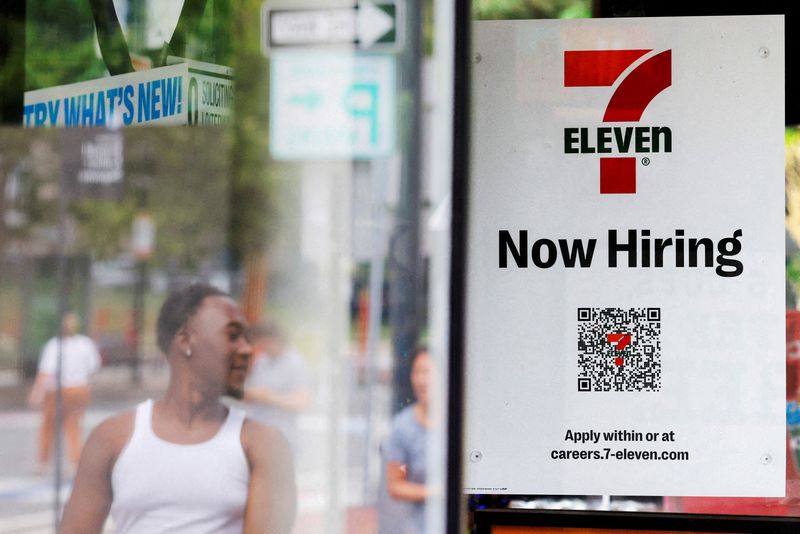
By Lucia Mutikani
WASHINGTON (Reuters) - U.S. job growth likely slowed to a still-healthy pace in June, with the unemployment rate holding steady at 4%, increasing the chances that the Federal Reserve will be able to tame inflation without tipping the economy into recession.
The Labor Department's closely watched employment report on Friday is also expected to show annual wage growth rising at its slowest rate in three years. When added to the moderation in prices in May, the report would confirm that the disinflationary trend was back on track after inflation surged in the first quarter.
It also could boost Fed policymakers' confidence in the inflation outlook and push the U.S. central bank a step closer to start cutting rates later this year.
Financial markets remain optimistic the Fed could start its easing cycle in September after aggressively tightening monetary policy in 2022 and 2023. Fed Chair Jerome Powell said this week that the economy was back on a "disinflationary path," but stressed policymakers needed more data before cutting rates.
"The economy is moving into a reasonable and sustainable, pace of employment growth," said Brian Bethune, an economics professor at Boston College. "There's no evidence of any sudden decline, nothing that would suggest we're suddenly going to tip over. We're still basically tracking a 'soft landing.'"
Nonfarm payrolls likely increased by 190,000 jobs last month after surging by 272,000 in May, according to a Reuters survey of economists. Employment gains have averaged about 230,000 jobs per month over the past 12 months.
Employment in these sectors is mostly back at 2019 levels, and the 525 basis points worth of rate hikes from the Fed since 2022 to curb inflation has weighed on business formation.
Excess savings accumulated during the COVID-19 pandemic have been exhausted, contributing to a slowdown in demand for both labor, goods and services.
"There's been a lot of the catch-up hiring that needed to be done to get businesses re-staffed again," said Sarah House, a senior economist at Wells Fargo. "That's largely complete across a lot of different sectors."
Even as the labor market is cooling, wage growth remains sufficient to sustain consumer spending and the overall economic expansion.
Average hourly earnings are forecast to have risen 0.3% in June after climbing 0.4% in May. That would lower the annual increase in wages to 3.9%, the smallest gain since June 2021, from 4.1% in May. Wage growth in a 3%-3.5% range is seen as consistent with the Fed's 2% inflation target.
The central bank has maintained its benchmark overnight interest rate in the current 5.25%-5.50% range since last July. The minutes of the Fed's June 11-12 meeting, which were published on Wednesday, showed policymakers acknowledged the economy appeared to be slowing and that "price pressures were diminishing."
Economists argue the labor market is not driving up inflation, noting that worker productivity has picked up, and worry that the Fed could stifle growth by keeping borrowing costs elevated for too long.
"Wage growth had been high earlier in this expansion, but it's come down, said Kevin Rinz, a senior fellow at the Washington Center for Equitable Growth. "Productivity growth has returned to the normal relationship it has with wage growth such that there's not a huge gap between those two. It doesn't really seem necessary at this point to be constraining the labor market for the sake of reducing inflation."
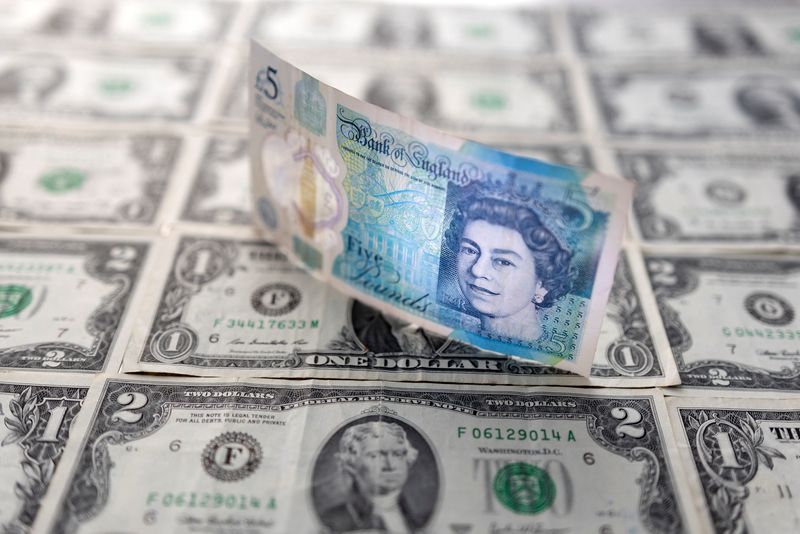
By Ankur Banerjee and Sameer Manekar
SINGAPORE (Reuters) - The U.S. dollar was hovering near three-week lows on Friday ahead of payrolls data that will likely influence the outlook for rates, while the pound was firm as the Labour party looked set to win a massive majority in the UK general election.
Sterling was last at $1.27575, little changed in early trading and not far off a three-week high of $1.27765 touched on Wednesday.
It is up 0.9% for the week, its best weekly performance since mid-May and remains the strongest-performing major currency against the dollar this year with a gain of 1.2%.
Centre-left Labour was on course to capture 410 of the 650 seats in parliament, a majority of 170 seats and affording investors some much-needed certainty after years of market volatility under the Conservatives.
"I don’t expect a new government to lead with a dramatic policy move any time soon, they will have learnt from mistakes of the past," Orla Garvey, senior portfolio manager for fixed income at Federated Hermes (NYSE:FHI).
"This pushes the risks associated with the UK election a little further down the line."
The euro was little changed at $1.0816 as traders refrained from making major bets with France gearing up for the run-off election on Sunday. Polls suggest the far-right National Rally (RN) is likely to fall short of a majority.
The single currency, which has been under pressure since French elections were called in June, is up nearly 1% for the week and on track for its strongest weekly performance of the year.
While worries that RN could gain a majority and introduce big spending increases have receded, the country is headed for a hung parliament which is likely to weigh on sentiment, analysts said.
"It’s hard to see a dynamic where any fiscal measures of substance are passed in France," said Chris Weston, head of research at Pepperstone.
U.S. traders return from their July 4th holiday and the spotlight will firmly be on non-farm payrolls, due later on Friday. The report is expected to show an increase of 190,000 jobs in June after a rise of 272,000 in May, according to a Reuters poll of economists.
A slew of economic data showing a cooling U.S. economy has heightened expectations the data-sensitive Federal Reserve will cut rates sometime soon. Traders are pricing in a 73% chance of a cut in September, according to the CME FedWatch tool.
Markets are also pricing in potentially two rate cuts this year, although the Fed last month forecast just one rate cut for 2024. Much will depend on upcoming data.
"A softer (payrolls) print should further boost rate cut expectations and add to USD downside," said Christopher Wong, an FX strategist at OCBC.
The dollar index, which measures the U.S. currency against six rivals, was down 0.1% at 105.05, close to its lowest point since mid-June.
The yen was 0.16% higher, up for a second straight day - something that hasn't happened since the start of June. It last fetched $161.095 per dollar, crawling slowly away from the 38-year low of 161.96 on Wednesday.
Traders have been wary of Japanese authorities intervening in the market to prop up the currency which has lost more than 12% against the dollar this year, weighed down by the wide interest rate difference between Japan and the United States.
Tokyo spent some 9.8 trillion yen in late April and early May to intervene in the currency market when the yen hit a then 34-year low of 160.245 per dollar. Analysts say, however, that authorities will focus on the pace of yen weakening and not just the levels.
In other currencies, the Australian dollar rose 0.16% to $0.6736, hovering near six-month highs, while the New Zealand dollar stood at $0.6121. [AUD/]
Bitcoin fell 2% to $57,088, just shy of the two month low it hit on Thursday.

